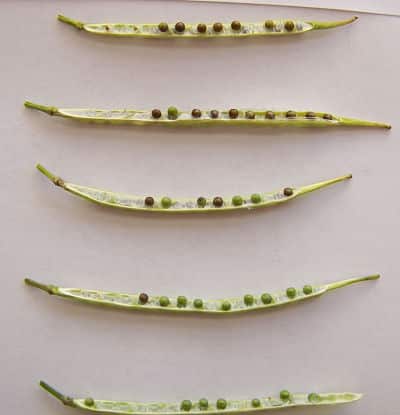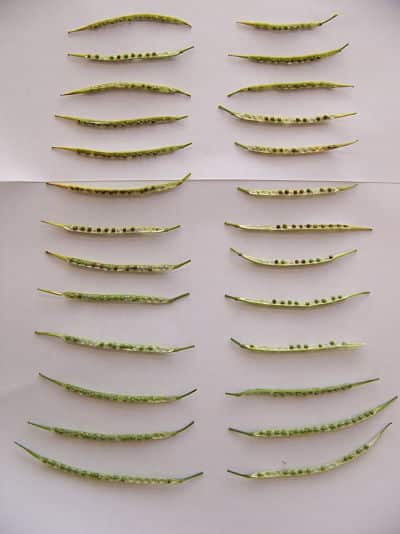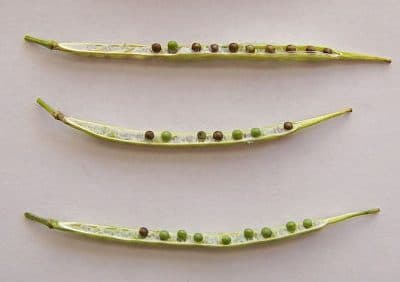Just because pods look dry and mature does not mean the seeds are ready for swathing. Sunscald and diseases such as blackleg, sclerotinia and clubroot can make plants look mature but the seeds may still be green. (Click here for an audio interview with more tips.) The opposite can also happen where pods look green but the seeds inside are ready for swathing. When assessing a canola crop to see if it’s ready, crack open pods on a number of plants throughout the field. Swathing timing is based on seed color change, not pod color. (Click here for a video description.)
Odd maturity patterns. Some growers have found canola with mature seed in pods at the top of the main stem but green seeds in pods at the bottom of the main stem. (See the photos below.) This is backwards. This reversed progression could be a response to moisture stress or some other environmental factor, such as hail damage. In this case, look at whole plants before making the swath timing decision. Don’t swath too early. (**Use photos from Troy. Credit Devin Pendree**)
Base the decision on what is best for highest yield. Look where your yield is coming from. Is it the main stem or side branches? Is it those early ripening upper pods or the ones lower on the main stems and branches? Once that is determined, hold off swathing as long as possible to let more seeds in those areas firm up and turn color. By waiting, you may sacrifice some yield in mature pods but the highest yielding parts of the plant have a chance to finish. The final consideration is frost. If frost is forecast, you may need to swath now to preserve what’s there.



